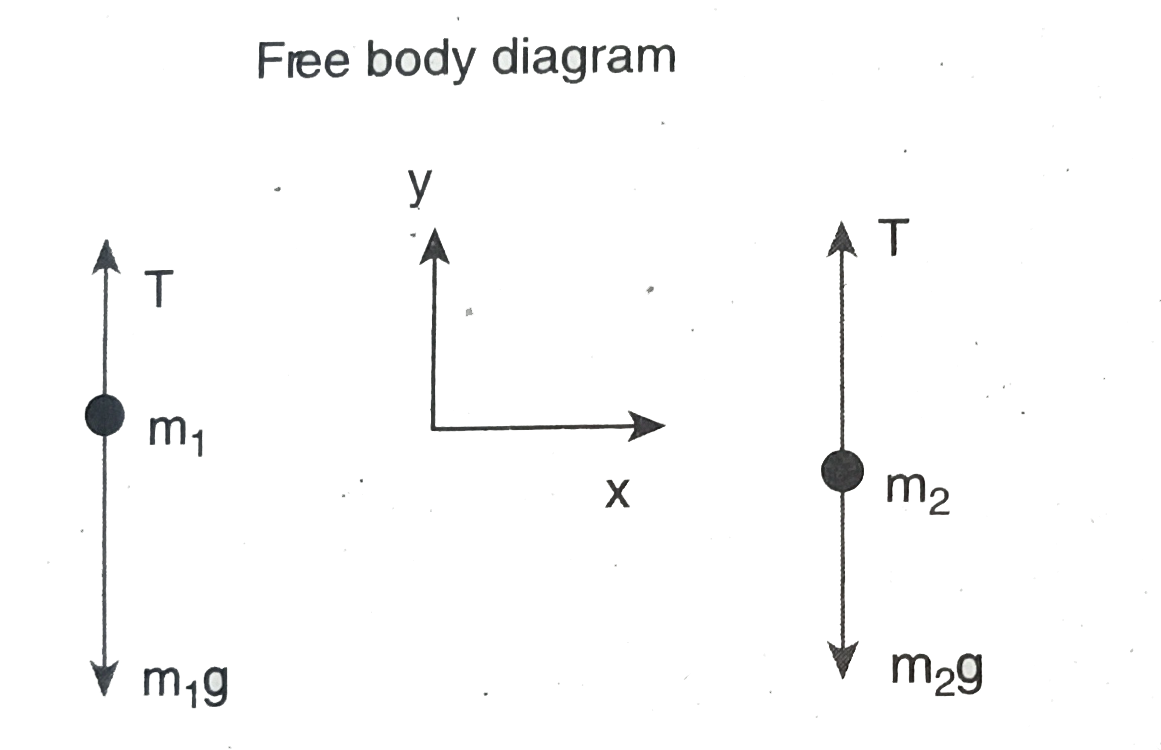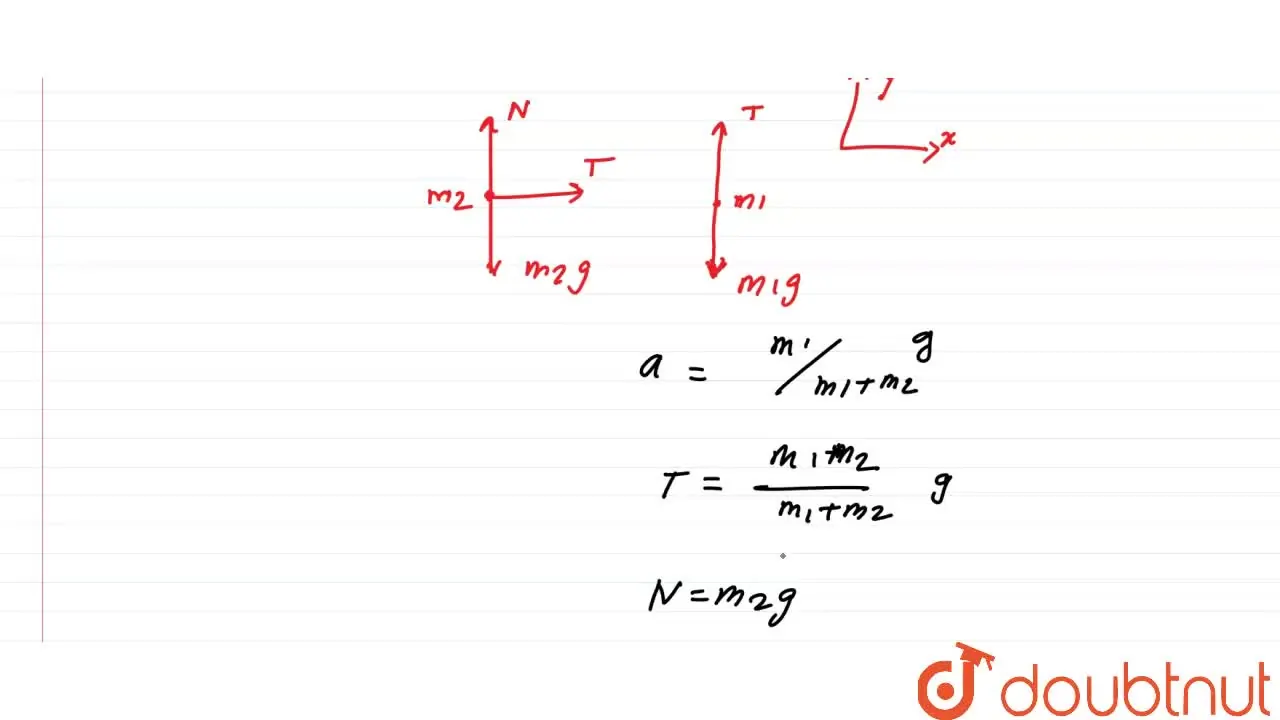Explain the motion of blocks connected by a string in (i) vertical motion (ii) horizontal motion . Solution in Tamil
Vertical motion: Consider two blocks of masses m1 and m2(m2>m1) connected by a light and inextensible string that passes over a pulley as shown in Figure. Let the tension in the string be T and acceleration a. When the system is released, both the blocks start moving,m2 vertically upward and m1 downward with same acceleration a. The gravitational force m1g on mass m1 is used in lifting the mass m2
The upward direction is chosen as y direction. The free body diagrams of both masses are shown in Figure.


Applying Newton.s second law for mass m2
Tˆj−m2gˆj=m2aˆj
The left hand side of the above equation is the total force that acts on m2 and the right hand side is the product of mass and acceleration of m2 in y direction. By comparing the components on both sides, we get
T−m2g=m2a
Similarly, applying Newton.s second law for mass m1
Tˆj−m1gˆj=−m1aˆj
As mass m1 moves downward (−ˆj), its acceleration is along (−ˆj)
By comparing the components on both sides, we get
T−m1g=−m1a
m1g−T=m1a
Adding equations (1) and (2), we get
m1g−m2g=m1a+m2a
(m1−m2)g=(m1+m2)a
From equation (3), the acceleration of both the masses is
a=(m1−m2m1+m2)g
If both the masses are equal (m1=m2), from equation (4)
a=0
This shows that if the masses are equal, there is no acceleration and the system as a whole will be at rest. To find the tension acting on the string, substitute the acceleration from the equation (4) into the equation (1).
T−m2g=m2(m1−m2m1+m2)g
T=m2g+m2(m1−m2m1+m2)g
By taking m,g common in the RHS of equation (5)
T=m2g(1+m1−m2m1+m2)
T=m2g(m1+m2+m1−m2m1+m2)
T=2m1m2m1+m2g
Equation (4) gives only magnitude of acceleration.
For mass m1 the acceleration vector is given by →a=−(m1−m2m1+m2)gˆj
For mass m, the acceleration vector is given by →a=−(m1−m2m1+m2)gˆj
Related Playlists
Similar Questions
What are the limitations of dimensional analysis?
08:52View SolutionThe force F acting on a body moving in a circular path depends on mass of the body (m) velocity(v) and radius (r) of the circular path. Obtain the expression for the force by dimensional analysis method (k=1)
00:38View SolutionMotion Of Fluid In Combined Horizontal And Vertical Acceleration
01:06:53View SolutionNewton's II law of motion connects:
View Solutionblock and string constrained motion-1
01:34View SolutionExpalin the motion of blocks connected by a string
(i) verticla motion
(ii) Horizontal motion04:42View SolutionThe whirling motion of a stone attached to a string is a .............. motion.
04:42View SolutionExplain the motion of blocks connected by a string in (i) vertical motion (ii) horizontal motion .
04:42View SolutionExplain the motion of blocks connected by a string in (i) vertical motion (ii) horizontal motion .
01:12:43View SolutionExplain the motion of blocks connected by a string in (i) vertical motion (ii) horizontal motion .
01:12:43View SolutionMotion in vertical circle | Variations in Motion in Vertical Circle
02:49View SolutionMotion in vertical circle | Variations in Motion in Vertical Circle
02:00View SolutionThe two dimensional motion of a body in which a vertical motion with constant acceleration (g) and a horizontal motion with constant velocity acts, such a motion is ____________.
03:09View SolutionThe two dimensional motion of a body in which a vertical motion with constant acceleration (g) and a horizontal motion with constant velocity acts, such a motion is
01:23View SolutionDerive the expression for acceleration and tension in a string in a connected motion.
01:01:17View Solution


